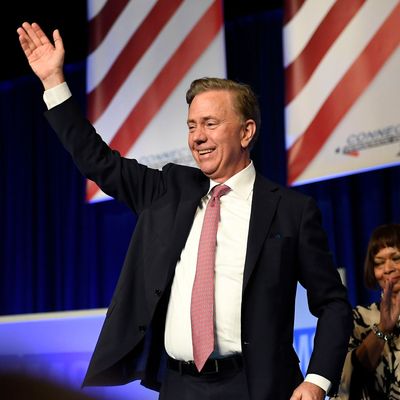
In many respects, the landscape for governors’ races around the country this year is the mirror image of the Senate landscape. There are 35 Senate races in 2018 (including special elections in Minnesota and Mississippi), divided into 26 seats currently held by Democrats and nine currently held by Republicans. There are 36 gubernatorial races, divided into 26 governorships current controlled by the GOP and just nine by Democrats (with one independent, Alaska’s Bill Walker).
Beyond that basic symmetry, though, there are serious differences between Senate and gubernatorial races. Governors tend to be more visible figures, able to command public attention whenever they want and benefiting or suffering from voter perceptions of how well state governments are operating. They are much more likely to do better or worse, as the case may be, than the “generic” vote for their party at the congressional level. The prevalence of term limits for governors, moreover, means that open seats are more common than in the Senate. This year there are 16 open gubernatorial offices, including 12 of the 26 controlled by Republicans.
These factors make the partisan outcome of gubernatorial races, overall, less predictable than those for federal offices. A new summary from veteran handicapper Jennifer Duffy of the Cook Political Report shows both parties benefiting from recent trends, but with Democrats poised to make serious gains. There remains a lot of uncertainty, particularly in states with unsettled fields and late primaries. And in the end most of these races will also be affected by the national political environment, which still tilts Democratic and likely will in November.
In one example of the eccentricity of governor’s races, Duffy shows two GOP incumbents in deep-blue states, Charlie Baker of Massachusetts, and Phil Scott of Vermont, consolidating near-certain wins. The few Democratic incumbents up this year are in reasonably good general election shape, though David Ige of Hawaii, and Gina Raimondo of Rhode Island, face serious primary challenges. Democratic open seats in Connecticut and Minnesota are not safe. In the former, the unpopularity of incumbent Daniel Malloy is creating a tough row to hoe for likely Democratic nominee Ned Lamont (famous for wresting away the party nomination from Senator Joe Lieberman in 2006). And two-term former Governor Tim Pawlenty is making Minnesota competitive for the GOP. Among the Republican-held seats, the GOP is already in big trouble in New Mexico (where right-wing congressman Steve Pearce isn’t a good bet to succeed unpopular term-limited incumbent Susana Martinez) and Illinois (where the deeply unpopular Bruce Rauner and his wallet are running for reelection).
Duffy has a total of nine gubernatorial races rated as toss-ups, including one that has recently been trending toward the Democrats (Iowa, where Democrat Fred Hubbell looks formidable against appointed incumbent Kim Reynolds). There’s another race Duffy rates as “Lean R” where recent polls also show some sharp movement toward Democrats, in Ohio, where Mike DeWine is no longer holding his early lead over Richard Cordray. And there are two ostensibly solid GOP states, Georgia and South Carolina, where Republican runoff elections are underway that could create divisions Democrats can exploit.
All in all, if there is a Democratic wave this fall, it won’t tilt all races toward the Donkey Party but could make a difference in the large number of close races. Here is Duffy’s conclusion:
With so many primaries yet to be decided, it’s a little early to predict a range of gains or losses for each party. It is fair to say that Republicans will lose seats. Given the political environment, Democrats are likely to be disappointed if they only pick up four or five seats. If they pick up seven or eight, it would be fair to call that a landslide.
With most of these governors set to remain in place during the next round of congressional and state legislative redistricting, the number of Democratic gains could be crucial.






























